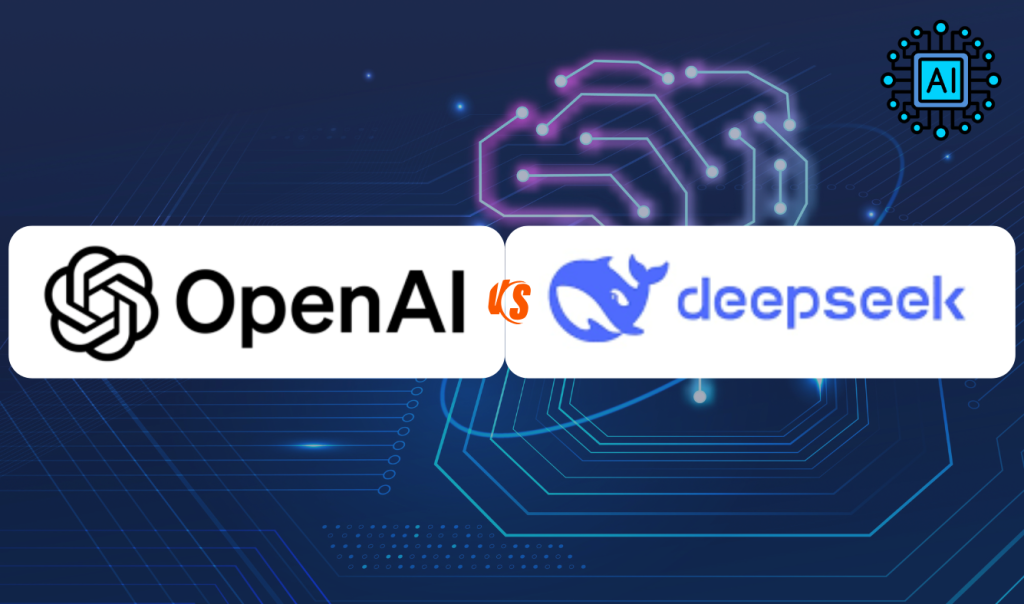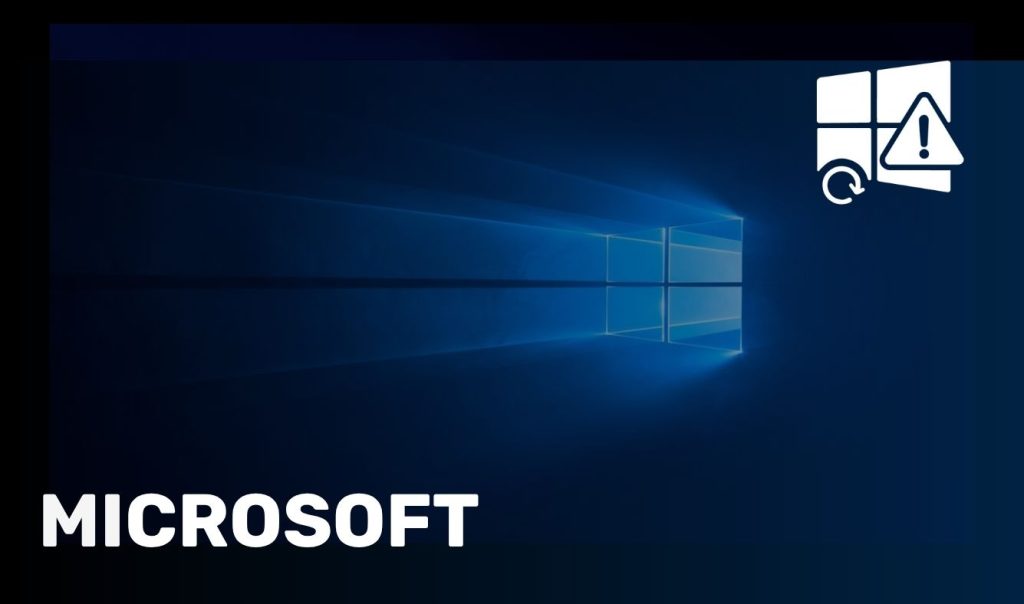Artificial Intelligence (AI) is advancing at an unprecedented pace, transforming industries, streamlining business operations, and reshaping the way people interact with technology. Two significant players in this field are DeepSeek and OpenAI, each representing distinct approaches to AI development.
While OpenAI has long been the dominant force in the AI landscape with its proprietary, high-performance models, DeepSeek has emerged as a strong competitor with its cost-effective, open-source models designed for specialized applications.
This comprehensive comparison by Creative Networks explores the differences in their missions, technological foundations, performance, cost efficiency, accessibility, ethical considerations, and multilingual capabilities.

Understanding the Companies: DeepSeek vs OpenAI
OpenAI: The Industry Leader in AI Research and Development
Founded in 2015, OpenAI is an American AI research lab known for pioneering AI advancements. Its flagship models—such as GPT-3, GPT-4, and the recently released o1 and o1 Pro—have set benchmarks in natural language processing (NLP), creativity, and reasoning. OpenAI operates on a proprietary, closed-source model, prioritizing high-performance AI with vast training datasets and extensive computing power.
Its mission is to ensure that artificial general intelligence (AGI) benefits all of humanity, though concerns have been raised about the company’s pricing, accessibility, and corporate partnerships.
DeepSeek: The Cost-Effective, Open-Source Challenger
DeepSeek, founded in May 2023 by Liang Wenfeng in Hangzhou, China, is a rapidly growing AI company backed by hedge fund High-Flyer. Unlike OpenAI, DeepSeek focuses on specialised industry applications, optimizing efficiency and cost-effectiveness while maintaining competitive AI performance.
DeepSeek’s primary innovation lies in its open-source models that allow businesses, developers, and researchers to freely modify, deploy, and fine-tune AI systems. The company’s mission is to democratise AI, making advanced AI capabilities accessible to industries like healthcare, finance, and legal services without requiring enormous computing resources.
Technological Foundations: Model Architecture and Training
Feature | DeepSeek | OpenAI (o1 & o1 Pro) |
Model Type | Transformer-based LLMs with Mixture-of-Experts (MoE) architecture | Transformer-based, dense general-purpose models |
Training Data | Hybrid datasets with domain-specific fine-tuning for specialized industries (healthcare, finance, legal, etc.) | Vast, general-purpose datasets (web content, books, academic papers, codebases) |
Efficiency Techniques | Sparse attention mechanisms reduce computational overhead | Heavy reliance on brute-force computational power |
Reasoning & Logic | DeepSeek-R1 optimized for chain-of-thought (CoT) reasoning, problem-solving, and structured logic | OpenAI o1 Pro leads in creative and abstract thinking, multi-modal tasks |
Training Cost | $5.58 million (90% cheaper than OpenAI) | Over $100 million |
DeepSeek’s Edge in Efficiency
DeepSeek employs Mixture-of-Experts (MoE) architecture, which selectively activates only the necessary neural network parameters for a given task. This approach allows it to maintain strong performance while significantly reducing computational costs, making DeepSeek much more cost-efficient than OpenAI.
Its Multi-Head Latent Attention (MLA) mechanism optimizes memory use, allowing long-context processing up to 128K tokens, which is ideal for analyzing legal documents, financial reports, and technical blueprints.
OpenAI’s Strength in Scale and Creativity
In contrast, OpenAI’s models rely on sheer computational power and massive datasets to generate state-of-the-art results across various tasks. OpenAI excels in general-purpose AI applications, such as creative writing, image generation, and language translation. However, its models require substantial computational resources, limiting accessibility for smaller businesses.
3Performance: Reasoning, Speed, and Accuracy
Metric | DeepSeek-R1 | OpenAI o1 / o1 Pro |
Reasoning Tasks | Competitive with OpenAI’s o1 in problem-solving | Strong in multi-step reasoning and abstract problem-solving |
Task Speed | 49 seconds per response | 171 seconds per response (o1 Pro) |
Coding Performance | 73.78% on HumanEval (coding tasks) | 78%+ (o1 Pro) |
Mathematical Accuracy | 84.1% on GSM8K (math benchmarks) | 88%+ (o1 Pro) |
DeepSeek’s speed advantage is particularly notable, as its R1 model can process up to 275 tokens per second, compared to OpenAI’s 65 tokens per second. However, OpenAI o1 Pro outperforms in highly complex reasoning tasks, making it a better fit for AI applications requiring extensive multi-step reasoning.
Cost Efficiency: DeepSeek’s Competitive Advantage
Factor | DeepSeek | OpenAI |
Training Cost | $5.58 million | $100 million+ |
Operational Costs | Optimized for low-cost AI deployment | Requires high-end GPUs and cloud infrastructure |
Hardware Requirements | Runs efficiently on 2 x Nvidia 4090s | Needs high-end cloud computing (Azure, custom supercomputers) |
DeepSeek’s lean approach makes it 90% more cost-effective than OpenAI, reducing infrastructure costs for businesses that need AI-powered automation without expensive cloud subscriptions.
Accessibility & Deployment: Open vs. Closed Ecosystems
Feature | DeepSeek | OpenAI |
Open Source? | Yes, freely available for modification and deployment | No, closed-source and API-based |
On-Premises Deployment | Yes, can run locally on standard GPUs | No, requires OpenAI cloud infrastructure |
Integration | Customizable for specialized enterprise needs | Easy-to-use plug-and-play API solutions |
DeepSeek’s open-source nature gives developers full control over customization and deployment. In contrast, OpenAI offers a convenient but restrictive API-based model, limiting flexibility but ensuring ease of integration.
Ethical Considerations & Geopolitics
Issue | DeepSeek | OpenAI |
Data Privacy | Operates under Chinese AI regulations, raising privacy concerns in Western markets | Follows Western AI ethics guidelines, but criticized for its closed approach |
Bias & Transparency | Open-source allows community audits | Closed-source makes bias mitigation less transparent |
Global Reach | Strong in China and Asia, limited in Western markets | Broad global reach, integrated with Microsoft |
DeepSeek’s AI governance aligns with Chinese data policies, which may limit its adoption in global enterprises that require compliance with GDPR or US data regulations. OpenAI, while proprietary, maintains greater trust in international markets.
Multilingual Capabilities: Who Performs Better?
Language Support | DeepSeek | OpenAI |
Chinese Language Tasks | Best-in-class Chinese AI model | Strong but not optimized for Chinese |
Multilingual Support | Growing but focused on Asian markets | Supports 50+ languages globally |
DeepSeek outperforms in Chinese-language processing, making it the best option for businesses operating in China. However, OpenAI provides broader multilingual support for international businesses.
Which AI Model Should You Choose?
Both DeepSeek and OpenAI offer powerful AI solutions, but the right choice depends on your specific business needs, industry requirements, and budget constraints. Understanding their key differences can help you make an informed decision.
Choose DeepSeek If:
✅ Cost Efficiency is a Priority – DeepSeek provides comparable performance to OpenAI at a fraction of the cost, making AI adoption more accessible to startups and enterprises with budget constraints.
✅ Industry-Specific Applications Are Essential – If you operate in finance, healthcare, or legal sectors, DeepSeek’s domain-specific models are fine-tuned for accuracy, compliance, and performance in these fields.
✅ Customization and Open-Source Flexibility Matter – DeepSeek is open-source, allowing businesses to modify and fine-tune AI models on proprietary data without vendor lock-in.
✅ Chinese-Language Optimization is Needed – For businesses operating in China or requiring Chinese-language support, DeepSeek is the superior choice, as it is optimized for Chinese-language tasks.
Choose OpenAI If:
✅ You Require a Versatile, General-Purpose AI – OpenAI’s o1 and o1 Pro models excel at a wide range of applications, including text generation, problem-solving, and creative content production.
✅ Seamless API Integration is a Priority – OpenAI’s cloud-based services make it easy to integrate AI-powered capabilities into existing workflows, applications, and enterprise systems, including Microsoft Azure.
✅ Multilingual Capabilities Are Essential – OpenAI supports over 50 languages, making it ideal for businesses with a global presence that require robust cross-lingual capabilities.
✅ You Need Advanced Reasoning & Creativity – OpenAI’s o1 Pro model offers superior performance in complex reasoning tasks, creative writing, and deep problem-solving.
Contact Creative Networks Today
At Creative Networks, we specialize in helping businesses harness the power of AI with tailored solutions designed to fit your unique needs. Our experts guide you in evaluating AI options to determine whether DeepSeek or OpenAI aligns best with your objectives. We ensure smooth integration, whether you opt for cloud-based OpenAI models or on-premise DeepSeek deployments, optimizing performance and security across your infrastructure.
Beyond implementation, we offer custom AI training and fine-tuning, allowing you to leverage AI for industry-specific applications that enhance efficiency, automation, and decision-making. As AI continues to shape the future of business, we help you future-proof your AI strategy, equipping your organization with cutting-edge analytics, automation, and intelligent workflows to stay ahead of the competition.
🚀 Ready to unlock AI’s full potential?
Contact Creative Networks today and let us help you implement the right AI solution to drive innovation and growth!




